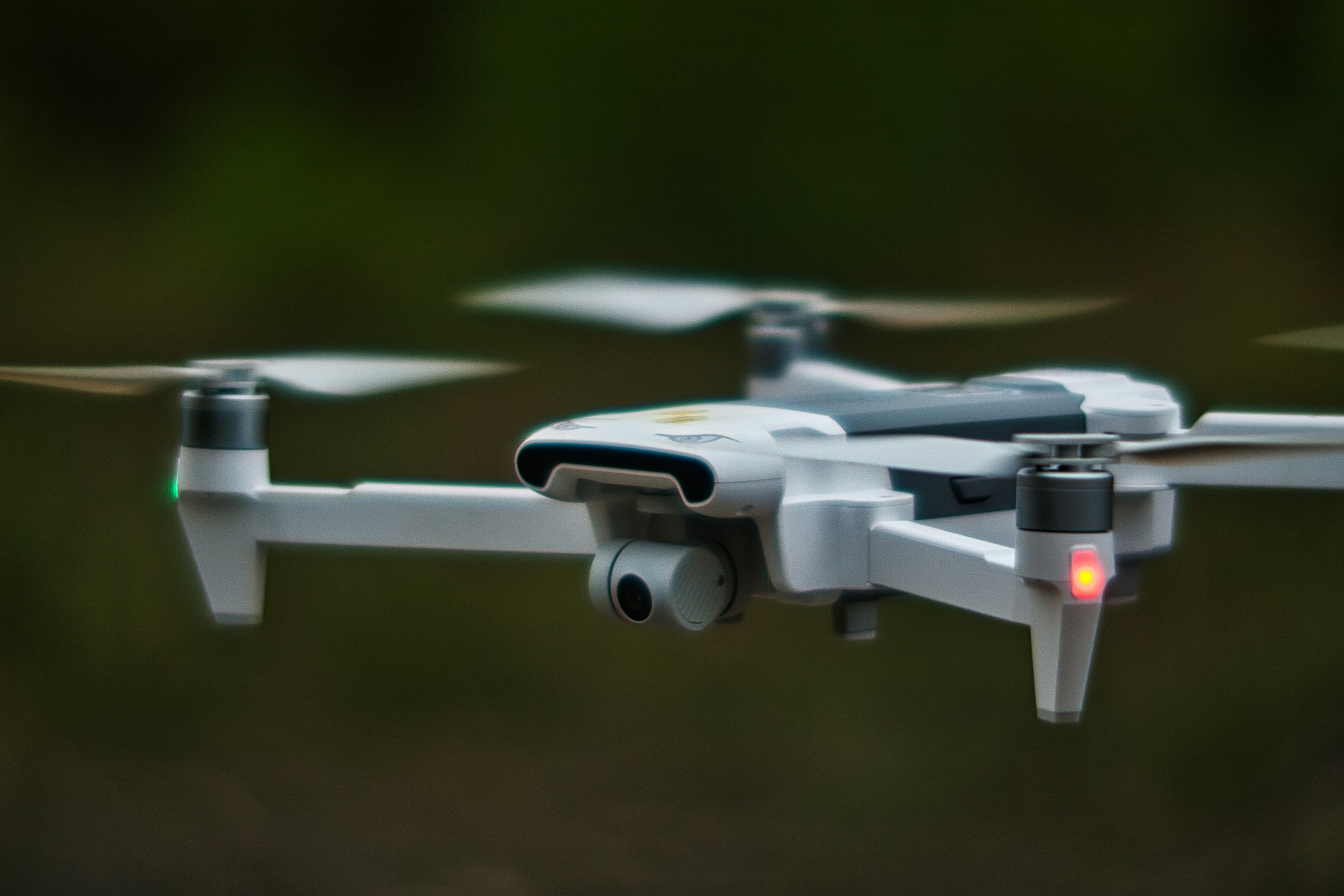
How to Hire Top Drone and UAV Professionals: A Comprehensive Guide for Recruiters
Unmanned Aerial Vehicles (UAVs)—often called drones—have soared into mainstream use in sectors ranging from construction and agriculture to filmmaking, security, and emergency services. As drones become more sophisticated and versatile, the demand for skilled UAV operators, technicians, and engineers continues to surge. For recruiters, this trend presents both a tremendous opportunity and a significant challenge: how to attract and retain the best drone and UAV talent in a rapidly evolving market?
In this guide, we’ll explore what’s driving growth in the UAV sector, outline the core skills and roles you should look for, and share best practices for hiring. We’ll also introduce you to www.uavjobs.co.uk, a specialised job platform that connects you with top-tier drone professionals in the UK, and show you how joining our LinkedIn community, UAV & Drone Jobs, can strengthen your talent pipeline and employer brand.
Table of Contents
Why Demand for UAV Talent Is Surging
Key Roles in the Drone Industry
Essential Skills and Qualifications
Challenges in Recruiting Drone Professionals
Best Practices for Hiring UAV Specialists
Leveraging www.uavjobs.co.uk
6.1 Targeted UAV Talent Pool
6.2 SEO-Optimised Listings
6.3 Employer Branding
6.4 Advanced Filtering & Analytics
6.5 Dedicated Support
6.6 Join Our LinkedIn Community
Cultivating an Attractive UAV Employer Brand
Retention Strategies for Drone Talent
Industry Sectors Embracing UAV Technology
Future Trends in Drone Recruitment
Frequently Asked Questions (FAQs)
Conclusion and Next Steps
1. Why Demand for UAV Talent Is Surging
1.1 Rapid Technological Advancements
Drone technology has moved beyond simple camera-equipped gadgets to complex systems featuring LIDAR, thermal imaging, and AI-based flight controls. This versatility spurs new applications, creating an ongoing demand for operators and engineers who can keep pace with cutting-edge tools.
1.2 Regulatory Evolution
Agencies like the UK’s Civil Aviation Authority (CAA) have developed clearer guidelines for commercial drone operations. Improved clarity encourages businesses—from real estate to logistics—to incorporate drones, thus fuelling job growth.
1.3 Cost Efficiency and Accessibility
Commercial UAVs are more affordable than ever, and training options are readily available. As a result, both start-ups and established companies can adopt drone solutions, expanding the market for trained operators and technicians.
1.4 Pandemic and Beyond
Remote inspections, contactless deliveries, and aerial surveys gained traction as safe, socially distanced alternatives during the pandemic. Even post-pandemic, these efficiencies remain attractive, boosting long-term demand.
1.5 Emerging Use Cases
Innovative industries—from precision agriculture and 3D mapping to cinematography and infrastructure maintenance—continue to adopt drones. This broadening scope means recruiters must look for specialised UAV talent who can handle varied challenges.
2. Key Roles in the Drone Industry
Drone and UAV roles typically revolve around piloting, engineering, data analysis, and project management. Here are some common positions to consider:
UAV Pilot / Operator
Handles flight planning, navigation, and on-site operations.
Must comply with CAA guidelines, handle emergency procedures, and maintain flight logs.
Drone Technician / Maintenance Engineer
Performs repairs, calibration, and upgrades.
Ensures hardware (motors, propellers, sensors) operates safely and efficiently.
Payload / Sensor Specialist
Focuses on specialised equipment like thermal cameras, multispectral sensors, or LiDAR scanners.
Works closely with operators and data analysts to optimise sensor performance.
UAV Data Analyst
Processes and interprets collected data—for example, creating orthomosaic maps or 3D models.
Skilled in GIS software, cloud-based analytics, and possibly machine learning for deeper insights.
Drone Software Engineer / Developer
Designs flight control algorithms, autopilot features, or real-time data processing systems.
Skilled in languages like C++, Python, and embedded systems programming.
Project Manager / Operations Coordinator
Oversees scheduling, client communications, and logistics.
Ensures compliance with aviation regulations and aligns UAV operations with business objectives.
Drone Instructor / Trainer
Provides certification and skills training for aspiring operators or corporate teams.
Must stay updated on best practices, flight restrictions, and emerging technology trends.
3. Essential Skills and Qualifications
3.1 Technical and Operational Proficiency
Aerial Navigation & Flight Controls
Familiarity with manual and autonomous flight modes, obstacle avoidance, and real-time flight data.
Regulatory Knowledge
Understanding of CAA regulations, Flight Restriction Zones (FRZs), and permits for commercial UAV operations.
Hardware & Software Expertise
Handling advanced gimbals, cameras, sensors, and flight software (DJI GS Pro, Pix4D, DroneDeploy).
Mechanical & Electrical Knowledge
Troubleshooting motors, ESCs, batteries, and communication systems, particularly for drone technicians.
3.2 Data Analysis & Software
GIS & Mapping Tools
Proficiency in ArcGIS, QGIS, or other mapping platforms for geospatial analysis.
Familiarity with data processing suites like Pix4D or Agisoft Metashape.
Programming (Optional)
Python, C++, or embedded systems knowledge for roles focusing on custom software or flight control algorithms.
Image/Video Editing
Basic to advanced editing for aerial photography or film production, especially in cinematography roles.
3.3 Soft Skills
Communication & Collaboration
Operators and technicians often coordinate with engineers, clients, and data analysts.
Clear reporting is essential for mission briefs and post-flight debriefs.
Adaptability
Drone tasks may change rapidly due to weather or project requirements; flexible thinking is crucial.
Problem-Solving
Drone pilots and technicians must quickly identify and resolve unexpected in-flight or hardware issues.
Safety Mindset
UAV operations can pose risks; a culture of meticulous pre-flight checks, risk assessments, and compliance is vital.
4. Challenges in Recruiting Drone Professionals
4.1 Regulatory Complexity
A candidate who can operate drones effectively isn’t necessarily well-versed in CAA rules or the specifics of advanced permissions (e.g., flying in congested areas). Verifying compliance knowledge can be tricky.
4.2 Rapidly Evolving Technology
Drone technology changes quickly. Even experienced pilots must constantly update skills in flight software, sensors, or advanced features (e.g., 3D mapping, obstacle detection).
4.3 Variable Role Definitions
Some companies use one “drone operator” to handle everything—flight, maintenance, data. Others split tasks between multiple specialists. Crafting clear job descriptions is paramount.
4.4 Location Constraints
Certain industries—like offshore wind farms or remote pipeline monitoring—operate in less-accessible areas, limiting the talent pool to individuals willing to travel or relocate.
4.5 Competitive Salaries & Benefits
Well-funded tech start-ups or large enterprises can offer premium packages, making it challenging for smaller firms to attract top-tier pilots or engineers.
5. Best Practices for Hiring UAV Specialists
5.1 Clearly Define the Role
Technical Scope: Do you need a pilot who can also interpret sensor data? Or a separate data analyst?
Experience Level: Junior pilots may handle simple aerial photography, while advanced mapping or industrial inspections often need a senior operator with specialised training.
5.2 Validate Compliance and Certification
GVC (General Visual Line of Sight Certificate) or A2 CofC are common in the UK for commercial drone use.
For advanced missions (e.g., BVLOS—Beyond Visual Line of Sight), check for additional or niche qualifications.
5.3 Real-World Scenarios in Interviews
Flight Planning Exercises: Ask how candidates would plan a mission with flight restrictions, weather constraints, or special payload needs.
Technical Problem-Solving: Explore a hypothetical motor or software malfunction scenario to gauge troubleshooting skill.
5.4 Competitive Compensation & Growth Path
Salary Benchmarking: Align compensation with the growing UAV market.
Professional Development: Budget for advanced certifications or conferences, especially appealing to high-calibre drone professionals.
5.5 Streamline the Hiring Process
Clear Timelines: Skilled pilots, especially those with niche sensor expertise, often field multiple offers.
Practical Trials: Consider paid pilot tests or short-term contracts to evaluate candidates on real projects.
6. Leveraging www.uavjobs.co.uk
6.1 Targeted UAV Talent Pool
When you post vacancies on www.uavjobs.co.uk, you reach a focused community of drone and UAV professionals seeking roles in the UK. This sharply reduces time spent filtering irrelevant profiles.
6.2 SEO-Optimised Listings
Our platform is SEO-optimised for terms like “drone jobs,” “UAV operator roles,” and “drone technician UK.” This targeted approach ensures that skilled UAV candidates can find your listings quickly.
6.3 Employer Branding
Enhance your job ad by showcasing your company culture, the technology stack (e.g., drone models or sensor payloads), and the types of projects a recruit will handle. UAV professionals often look for variety and innovation in their missions.
6.4 Advanced Filtering & Analytics
Use our tools to filter candidates by:
Certifications (A2 CofC, GVC)
Software Skills (Pix4D, DroneDeploy, LiDAR data processing)
Industry Experience (agriculture, infrastructure, film)
Track listing performance, application rates, and more—helping refine your recruitment strategy.
6.5 Dedicated Support
Our support team understands the drone sector, from hardware intricacies to regulatory nuance. We assist in shaping compelling job ads that resonate with top UAV talent.
6.6 Join Our LinkedIn Community
Complement your job posting by engaging with our LinkedIn page, UAV & Drone Jobs. This community allows you to:
Network with drone professionals, tech innovators, and recruiters.
Share Success Stories: Post about completed UAV projects, safety milestones, or advanced sensor integrations.
Stay Updated: Keep a finger on the pulse of the UAV industry, from new drone models to legislative changes.
This LinkedIn engagement strengthens your employer brand, showcases your UAV-focused culture, and helps you connect with potential hires on a more personal level.
7. Cultivating an Attractive UAV Employer Brand
7.1 Emphasise Innovation and Impact
Pilots and engineers crave challenges—highlight how your UAV missions reduce carbon footprints, boost safety, or revolutionise data collection for your clients.
7.2 Support Ongoing Training
Encourage pilots to acquire additional certifications or to learn about advanced sensors (thermal, LiDAR). Show them a roadmap for growth, from junior operator to flight operations manager.
7.3 Showcase Real Missions
If permissible, share short case studies or highlight expansions in your UAV fleet. Operators often want to see tangible results—like filming a major commercial, executing a complex industrial inspection, or aiding disaster relief.
7.4 Open Communication
Foster an environment where operators, technicians, and data analysts can collaborate freely—whether it’s to refine flight plans or discuss maintenance schedules. Drone professionals value teams that operate as a cohesive unit.
8. Retention Strategies for Drone Talent
8.1 Varied and Challenging Assignments
Avoid relegating skilled pilots to monotonous or repetitive tasks. Rotate them through different projects—like wind farm inspections one week and agricultural mapping the next—to maintain engagement.
8.2 Clear Advancement Pathways
Articulate how a drone operator might transition into operations management or how a maintenance technician can step up to R&D engineering. Regular progress check-ins ensure employees see a future in your company.
8.3 Acknowledge Achievements
Celebrate milestones such as zero-incident flight hours, new pilot certifications, or successful high-stakes missions. This recognition fosters pride and loyalty.
8.4 Compensation Reviews
Periodically benchmark salaries against the evolving drone market. Adjust pay or offer performance bonuses—particularly for specialised skill sets like BVLOS or advanced sensor operations.
9. Industry Sectors Embracing UAV Technology
Construction & Infrastructure
Site mapping, 3D modelling, progress tracking, and safety inspections.
Agriculture & Forestry
Crop monitoring, precision spraying, livestock tracking, and soil analysis.
Media & Film Production
Aerial photography, cinematography, live event coverage, and creative storytelling.
Public Safety & Emergency Services
Search and rescue, disaster relief mapping, hazard assessment, and situational awareness.
Logistics & Delivery
Last-mile transport solutions, medical supply drops, e-commerce deliveries in remote areas.
Energy & Utilities
Pipeline monitoring, wind turbine inspection, solar farm surveillance, and power line checks.
10. Future Trends in Drone Recruitment
10.1 Beyond Visual Line of Sight (BVLOS)
As regulators refine BVLOS rules, drones can fly longer distances for delivery, inspection, and agricultural tasks. Demand for operators with BVLOS credentials will grow.
10.2 Drone Swarming & Automation
Swarm technology enables multiple drones to work collaboratively, expanding complex mission capabilities—from large-scale scanning to coordinated deliveries.
10.3 AI and Autonomy
Advanced machine learning models can interpret real-time data, reducing the manual load for operators and emphasising high-level oversight. Candidates with AI integration skills will be prized.
10.4 Green Initiatives
Eco-focused companies use drones for environmental surveys, reforestation (seed dropping), and wildlife monitoring. The synergy between sustainability and UAV usage can attract mission-driven professionals.
10.5 Specialised Drone Manufacturing
As drone tech diversifies, so does the need for engineers in propulsion, electronics, and aerodynamics—spanning hardware R&D to software solutions.
11. Frequently Asked Questions (FAQs)
Q1: What certifications should a commercial UAV operator have in the UK?
At minimum, a A2 Certificate of Competency (A2 CofC) or a GVC (General VLOS Certificate) is common. Higher-level operations might require Operational Authorisations from the CAA, particularly for BVLOS tasks.
Q2: Which programming languages are most relevant for drone software roles?
C++ for flight control, Python for data processing and script automation, plus embedded systems knowledge for custom firmware or sensor integrations.
Q3: How do we assess the flight skill of a UAV pilot?
Consider practical flight tests or request flight logs, mission planning documents, and references from past employers/clients. A pilot’s approach to risk and compliance is just as crucial as manoeuvring skill.
Q4: Do drone operators always work on-site?
Many tasks—like agriculture mapping or security patrol—are on-site. However, data analysis (e.g., photogrammetry, video editing) can be done remotely, offering partial hybrid work possibilities.
Q5: Are advanced degrees necessary for UAV professionals?
Not necessarily. Some roles prioritise hands-on flight hours, mechanical skills, or software proficiency over formal degrees. That said, aerospace engineering or electrical engineering degrees can be valuable for R&D or advanced maintenance positions.
Q6: What’s the typical salary range for UAV roles?
Entry-Level Operators: ~£25,000–£35,000 per year.
Mid-Level/Experienced Pilots/Technicians: ~£35,000–£50,000.
Senior/Managerial or Specialised (BVLOS, advanced sensors): £50,000+.
12. Conclusion and Next Steps
With UAVs poised to become an integral part of logistics, surveillance, industrial inspections, and beyond, the race to recruit skilled pilots, engineers, and technicians is on. By defining clear job requirements, offering competitive benefits, and embracing a continuous learning culture, you can secure the top-tier drone professionals needed to keep your organisation flying high.
How www.uavjobs.co.uk Can Help
Advertise Your Roles: Posting on www.uavjobs.co.uk targets an audience dedicated to drone-related opportunities, reducing mismatched applications.
Optimise Visibility: Our SEO-friendly platform ensures your job ad appears prominently for those searching “drone pilot jobs,” “UAV technician roles,” and more.
Enhance Employer Brand: Share your innovative projects, growth opportunities, and team culture to entice high-calibre candidates.
Join Our LinkedIn Community: Connect with UAV professionals via UAV & Drone Jobs to further your reach, gain industry insights, and build genuine relationships.
By leveraging these strategies and resources, you’ll position your organisation for success in recruiting, developing, and retaining the drone talent you need—ready to tackle the next generation of UAV challenges.
Start your UAV recruitment journey today. Visit www.uavjobs.co.uk to post job openings and connect with experienced drone professionals. And don’t forget to join our LinkedIn community at UAV & Drone Jobs for networking, industry updates, and more! Contact sales@futuretechjobs.co.uk to find out more.


